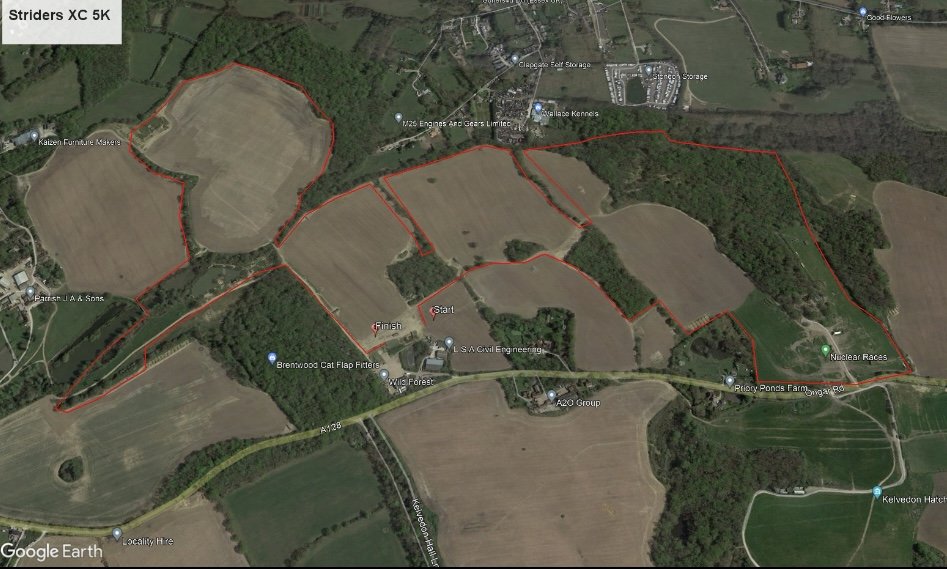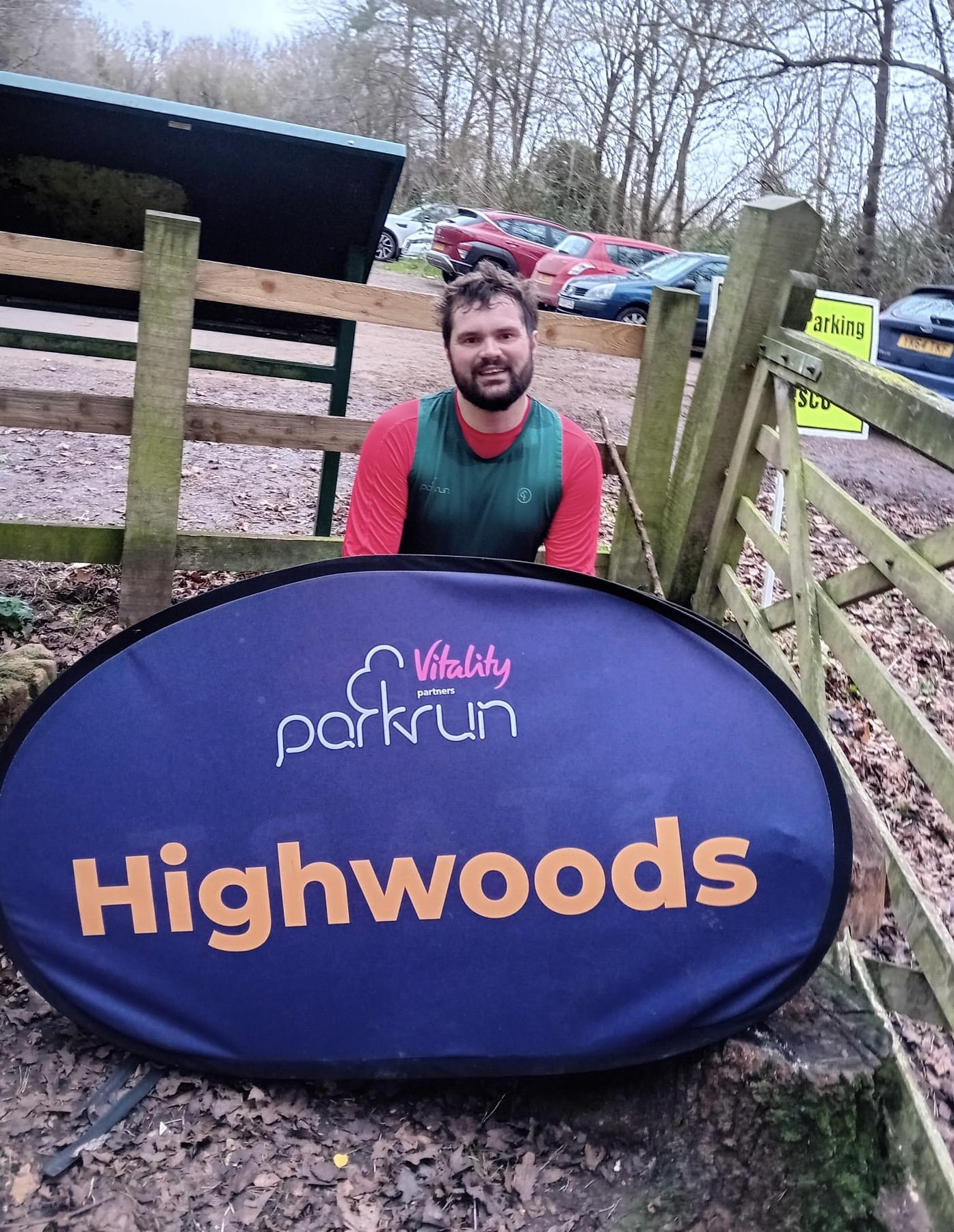BRR Blog – 6 January 2025
Welcome to 2025, Road Runners!
The old year didn’t end well for BRR, losing as we did one of our most inspirational members, so it’s a relief to say ‘hello’ to 2025, and wave goodbye to 2024.
If you’ve seen previous New Year’s BRR blogs, you’ll know I am not one for New Year's resolutions, as they are usually about depriving yourself of things you enjoy or beginning things you won’t enjoy! Instead, start by looking back at the previous year: what went well? What didn’t go quite to plan? What can you learn from your experiences? What can you change, or what do you need to keep doing, to make things better this year? Focusing on positive, realistic goals, achievable, makes you much more likely to succeed. Conversely, setting unrealistic goals will only make you despondent and lose heart, setting you up to fail.
Weekly tip:
Bananas - just one before an early morning run will give you energy
If you are running first thing in the morning, eat some easily digestible calories, like a small yoghurt or a banana, beforehand, to give yourself some energy. You’ll perform better as a result.
Wild Forest Cross Country – Acknowledgement of Risk
The Wild Forest XC course
The South Essex Cross Country League race on 12 January at the Wild Forest is organised by Nuclear Races Striders. NRC requires all participants in the race to sign an acknowledgement of risk on race day. Please don’t worry: the course is no riskier than any of the XC courses that we run, and it is positively tame compared to the last Hadleigh course! However, as well as a running club, NRC are a company that arranges obstacle courses and, as such, they have their own commercial public liability insurance which requires the acknowledgment of risk. Here is what you’ll be asked to sign up to:
· I understand that all activities undertaken at Wild Forest (WF) are physically and mentally challenging and there are risks involved. This includes but is not limited to water based, surface, trip, slip and eye hazards, and a risk of falling from height.
· I consent to emergency medical care and transportation in the event of injury to obtain treatment a medical professional deems appropriate.
· I will comply with all instructions given to me by the organisers, employees, and volunteers of WF and will use equipment correctly and as directed (if necessary) so as not to hurt or injure themselves or anyone else.
· I understand that WF reserves the right to cancel or modify any Events/activity if WF feels such conditions would otherwise create an unsafe environment.
· I agree that WF are not responsible for any personal items or property that are lost or stolen at WF.
· I agree that I will not sue, or otherwise make any claim (including death, injury, loss or damage) against WF or its employees, agents, and contractors.
· I permit the WF to use my photo and/or any other record of my participation at WF for any legitimate purpose.
· I have declared any medical conditions, which may risk my safety, to one of the members of WF’s staff.
· I am legally competent to sign this acknowledgement of risk.
Not Effing…Jeffing!
Thanks to John Lang, who sent me a link to an interesting article in the Guardian about the benefits of ‘Jeffing’ (not ‘effing’ as my article before Christmas about the benefits of swearing while running, suggested).
For those who don’t know, Jeffing is a run/walk technique made popular by Jeff Galloway. Galloway was part of the US athletics team at the 1972 Olympics and has a 10k personal best of around 28 minutes. At the age of 79 he is still running and also works as a coach. He puts the longevity of his running career – despite a serious heart condition sustained during the Vietnam war – down to his Jeffing technique, which he claims not only reduces the risk of injury but can also help you to run faster overall than would otherwise be the case.
Galloway came up with the idea of Jeffing back in 1973, when he found that beginners he was coaching suffered from all sorts of aches and pains. He came up with a pace-shifting plan and applied it to a group of 22 people with an average age of 42. Speaking about the plan, Galloway said:
“We started off walking, flowed into a jog and then walked again. We followed that pattern and at the end of the 10-week programme, every one of the 22 had finished either a 5km or a 10km. That was great in itself, but I then realised none of the group broke down with injury. I’d never before trained a group of runners where at least one hadn’t been injured.”
Galloway, who hasn’t suffered an injury himself since 1978, believes the run/walk technique is more similar to what our ancient, hunter-gatherer, ancestors would have done than running flat out.
“According to anthropologists, while humans were designed for long distances – up to 5,000 miles during the earliest migrations – we weren’t designed for non-stop running. It’s not inherently in our DNA to run continuously, which is why many individuals break down.”
So, what does the technique actually involve? For a beginner, it might mean running intervals of one or two minutes, followed by longer walking breaks, for about 20 minutes. Over time, the run intervals lengthen while the walking ones shorten. The whole session might lengthen, too, depending on your goals.
“In our database, we’ve discovered that 30 seconds is the maximum walking time that bestows the greatest amount of benefit,” says Galloway. “This results in a good pace and recalibrates the muscle’s fatigue levels from the get-go” says Galloway.
The important thing to reap the benefits of Jeffing is follow the run/walk technique right from the start of your session; if you run until you are exhausted then start Jeffing will have already put unnecessary strain on your body and not be able to maintain a good speed in the run intervals.
Why might it be worth giving Jeffing a go? Because it might give you better results! A 2016 study in the Journal of Science and Medicine in Sport found that non-elite Jeffing participants reached the finish line of a marathon in roughly the same time as nonstop runners. A mixed gender group of run-walkers finished in times ranging between 4:14 and 4:34, with the run-only group’s times ranging from 4:07 to 4:34. It’s why about 40% of those who sign up to one of Galloway’s training programmes are experienced runners hoping to either finish faster or keep running until they’re 100. As Galloway says:
“In many races, our Jeffing folks are the ones at the end that are passing people. And there’s nothing more exciting in life than that!”
I Jeffed (two minutes run, one minute walk) - and effed a bit - for most of the RunThrough Half Marathon in Victoria Park on Sunday. Though it was nowhere near my fastest-ever Half, it was much faster than I expected on the back of no training and a streaming cold.
Greg’s Race Report
Several Barking Road Runners took part in a wet Half Marathon organised by Runthrough. The race consisted of 6.75 laps of Victoria Park in Hackney. First BRR runner to finish was Steve Colloff 2:17:27 followed by Rob Courtier 2:21:50, Lizzie Beth Garraghan 2:21:51 and Alison Fryatt 2:33:48.
BRR parkrunners
New Year’s Day at Valentines - Paul Withyman 20:24, Kevin Wotton 25:27, Joshua Ezissi 27:05, Faye Spooner 28:09, Belinda Riches 28:13, Hannah Hylton 28:16, Stephen Colloff 28:44, Jason Li 29:22, Emma Paisley 30:36, Chris Muthaka 30:48, Gary Harford 31:38, Rob Courtier 31:57, Louise Chappell 32:29, Craig Chappell 32:30, Andrew Gwilliam 33:18, Alison Fryatt 34:16, Nikki Cranmer 37:27, Joyce Golder 37:29, Dawn Curtis 53:29 and Alan Murphy 54:05.
The BRR team at Valentines parkrun on NYD
Barking - Owen Wainhouse 21:48, Joshua Ezissi 23:05, Mark New 24:57, Stuart Burr 25:28, Jonathan Furlong 26:11, Jason Li 27:25, Faye Spooner 27:42, George Hiller 29:56, Martin Mason 33:45, Nikki Cranmer 33:47, Les Jay 40:31 and Alan Murphy 53:41.
New Year’s Day at Bournemouth - Mark New 25:59
Harrow Lodge - Doug King 27:54.
Doug at a frosty Harrow Lodge parkrun
New Year’s Day at Highwoods - Rory Burr 32:43
Rory at Highwoods parkrun
Riverside Walk - Rosie Fforde 26:27 and Joe Stacey 43:29.
Thurrock - Belinda Riches 24:57, Ron Vialls 26:07, Stephen Colloff 32:24 and Louise Chappell 32:33.
Darren, Louise, Belinda, Ron, Steve C, and Belinda’s family members at Thurrock parkrun
Valentines - Kevin Wotton 24:17.
Highest BRR gradings this week were Belinda Riches 69.81% for the women and Ron Vialls 69.24% for the men.
BRR Diary – January
To see the full diary of BRR events on the TeamUp app. Just download the TeamUp app onto your phone, then enter the calendar key: ks67p21gt8p5gzdo66 when asked. If you don’t want another app on your phone, you can also find it under the ‘events’ tab on the Barking Road Runners website: https://www.barkingroadrunners.org.uk/calendar.
7.00pm, Tuesday 7 January – Speed Session. Jim Peters Stadium, Mayesbrook Park. CHANGE IN PLANNED SESSION. As Rob is unexpectedly away, the timed mile session is delayed for a week. Instead, we will start the year with an easy session…only kidding! We will start with a toughie, as we mean to go on - the evil pyramid:
· 3 x (30 seconds fast, 30 seconds recovery)
· 3 x (60 seconds fast, 60 seconds recovery)
· 6 x (90 seconds fast, 90 seconds recovery)
· 3 x (60 seconds fast, 60 seconds recovery)
· 3 x (30 seconds fast, 30 seconds recovery)
7.00pm, Thursday 9 January – Road Run. Castle Green Centre, Gale Street, Dagenham. First Thursday night club run of the new year.
10.00am, Sunday 12 January – SECCL 04: The Wild Forest. Wild Forest Outdoor Activity Centre, Ongar Road, Brentwood, Essex CM15 0LA (What3Words Flames.land.lows). Hosted by Nuclear Races. BRR members are kindly invited back to Martin Page’s place afterwards.
10.00am, Saturday 18 January - Chingford League (CL05) Epping Forest. Meet at the Orion Club House, Jubilee Retreat, Bury Road, Chingford before a walk down to the race start. More details to follow.
10.00am, Sunday 19 January – The Benfleet 15. Hadleigh Country Park, Chapel Lane, Benfleet, Essex, SS7 2PP. Sorry, it seems the world is full of mad people and this race is SOLD OUT, though there is a waiting list.
Cracker Corner
A truck carrying turnips, carrots, and parsnips has overturned on the A13. Police have advised us to choose alternative roots.
A furniture shop in Ilford has a mirror sale. I might go and look into it.
Which side of a polar bear has the most fur? The outside.
Quote of the Week
“The best way to overcome self-limiting fear is to go ahead and fail, at which point one sees it’s not so bad.”
Matt Fitzgerald
Sports Coach and Author
And Finally
Dachshund - The Roger Bannister of the dog world?
You might think that Stanley the Sausage Dog is a poor choice of mascot for parkrun, but it turns out you could be wrong.
A miniature dachshund, called Georgie, weighing just 20 pounds, has completed a mile run in just 4:47.66. That’s 12 miles, or 20k, per hour pace. A bit slower than Roger Bannister when he first broke the record for running a mile in under four minutes, but then, Georgie has much shorter legs than Roger Bannister had, although he has four compared to Bannister’s two.
To get Georgie to complete this amazing running feat, owner Allie Ostrander attached a dog treat to a stick and hung it off the back of her car, before speeding off. Having completed the mile, Georgie was rewarded with the treat and water. It tuns out that, while dachshunds might not have endurance, their little legs and long bodies can run pretty fast over shorter distances.
Now, what would need to be dangled out of the back of a car to make you run that speed…
Happy running
Alison
Chair, Barking Road Runners








